
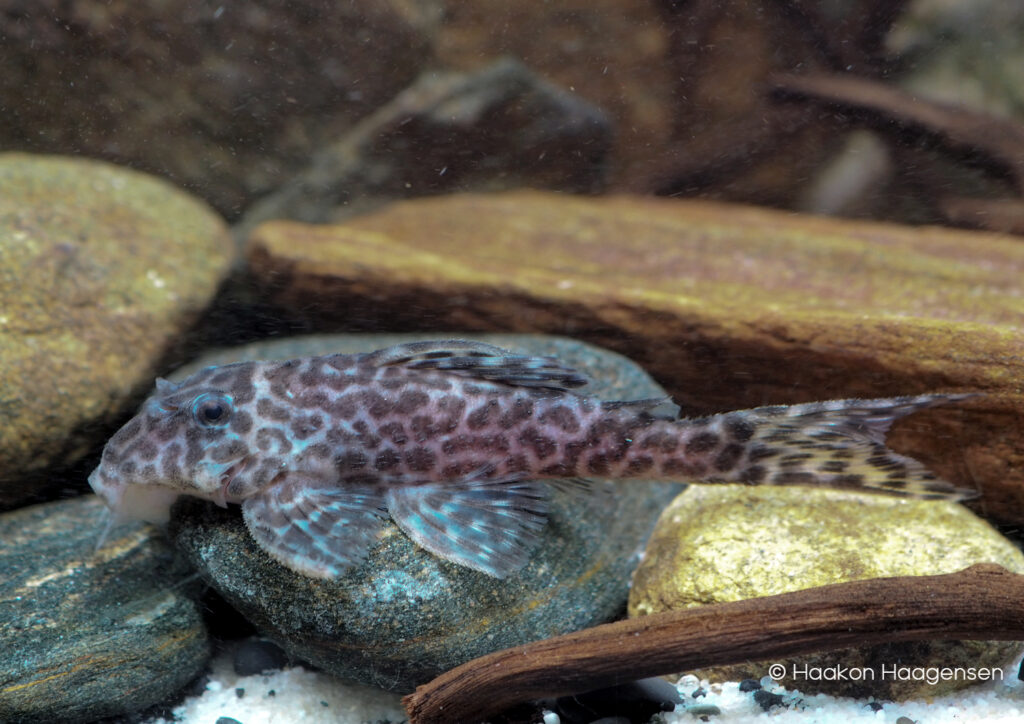
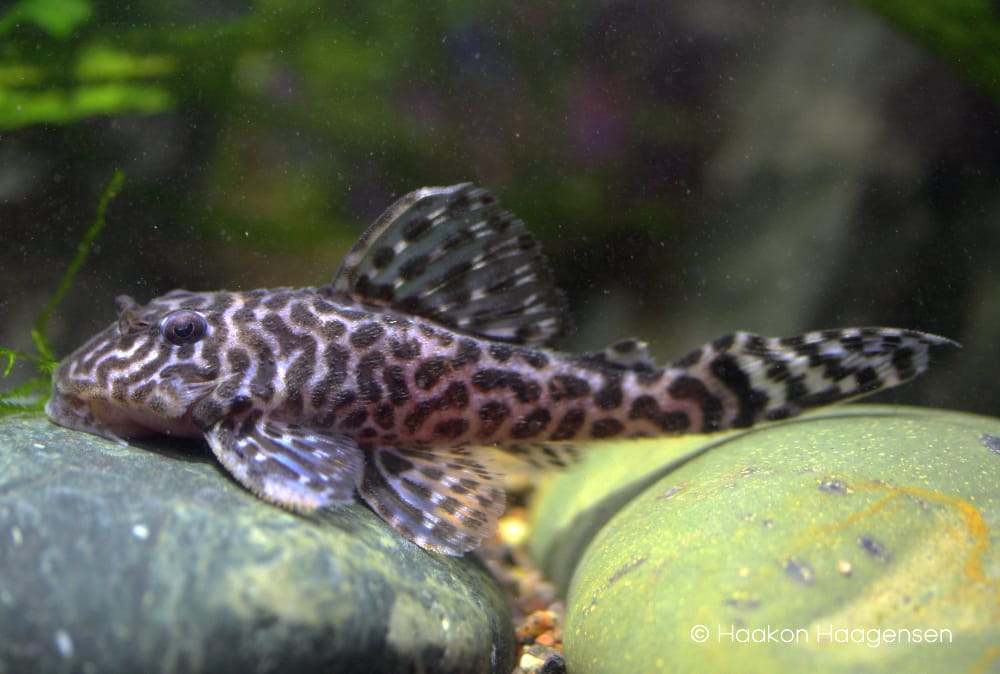
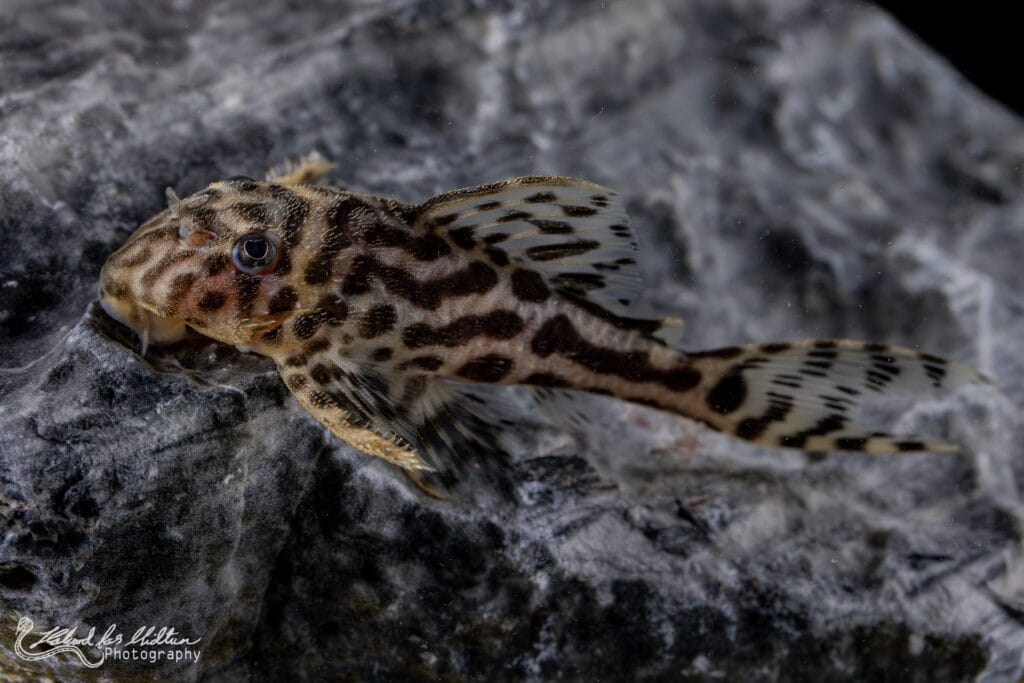
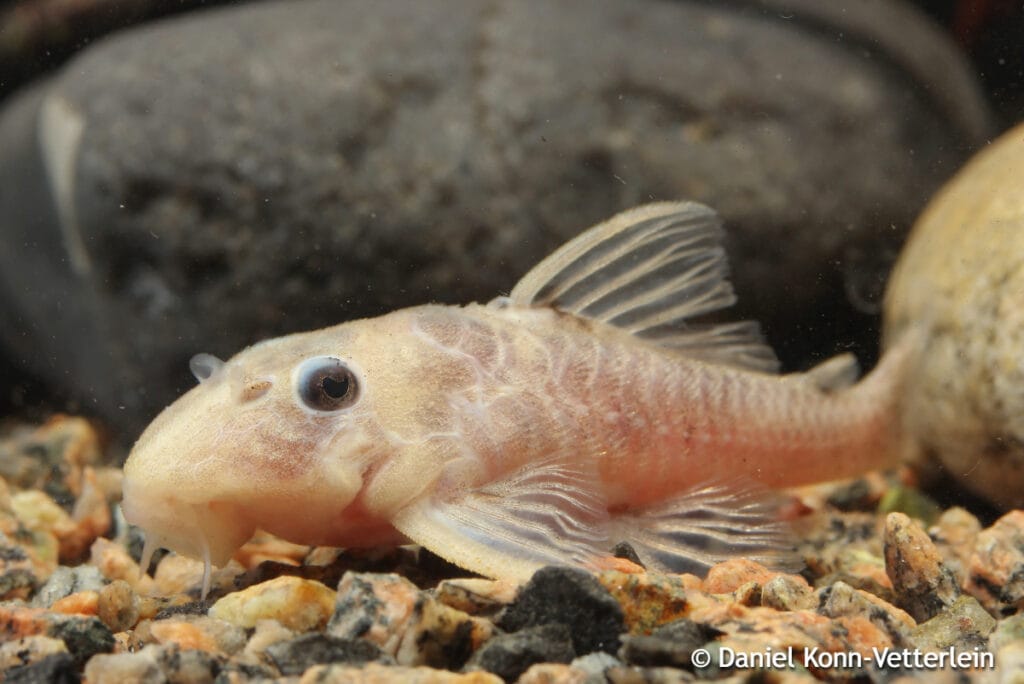
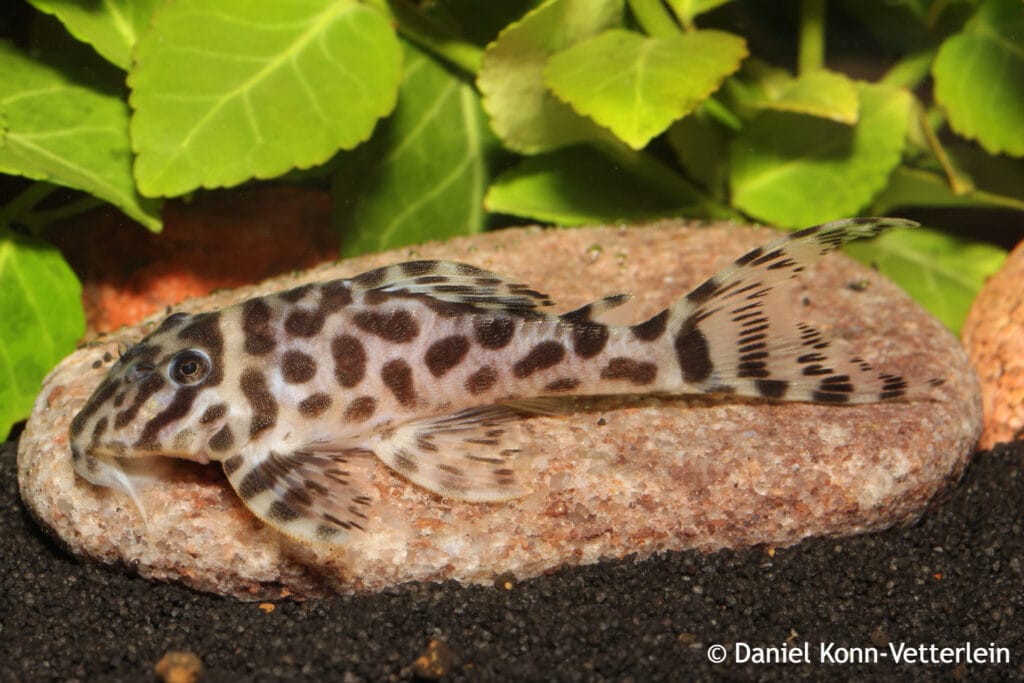
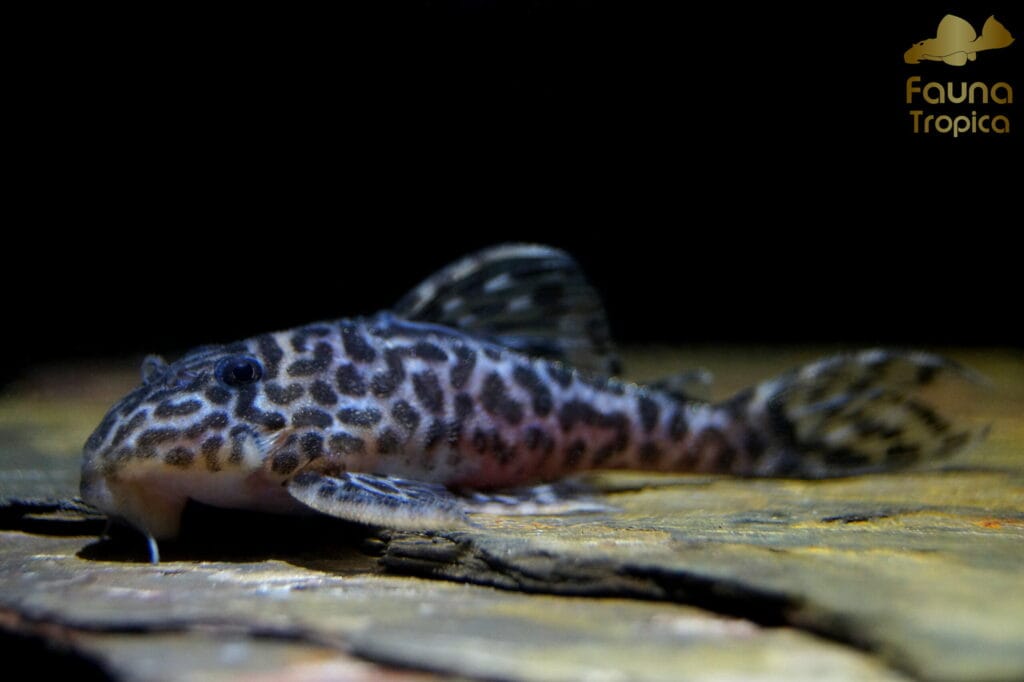

One of the smallest of the known Hypancistrus species is H.yudja, L174. It has a very limited distribution, it’s only known from a few deep-water pools downstream from Altamira, Rio Xingu, Brazil. It’s not allowed for export from Brazil, so captive breeding is absolutely necessary for the survival of the species in the hobby. The species is certainly endangered, even in nature it may be lost once the consequences of the damming of its habitat are fully understood. Luckily, a few good breeders have them, so they will not be lost to the world just yet. Still, it’s rareness means it should only be kept by serious fishkeepers with the intent of breeding them.
Facts:
Name: Hypancistrus yudja (Sousa, Sousa, Ribeiro, Sabaj, Zuanon & Py-Daniel, 2025)
Trade names: Ozelot Pleco, L174
Origin: Rio Xingu, Brazil
Maximum size: 8 cm / 3”
In the mass of Hypancistrus forms from Rio Xingu, H.yudja can be fairly easily identified. It has very small eyes, a trait it only shares with a deep-water form of H.seideli known as L470 which is found syntopic with H.yudja. From L470 it can be told apart by its diminutive size and shorter head. The body is usually covered with large, black blotches, which sometimes form short lines, especially in young individuals. Adult males are often very grey and dull with most of their pattern hidden behind impressive odontodal growth on their flanks.
They need an aquarium set up consisting of lots of hiding places in the form of rocks, wood and of course specially made caves that suit their measurements. In these the males will eventually guard their offspring. They prefer water that is warm (27-30 C), soft and slightly acidic. Most of all it should be well oxygenated and clean, so a good filtration system and frequent water changes are essential. Among themselves they are peaceful, although males may quarrel for caves and females can sometimes be badly injured or even killed during the breeding-trapping in the male’s cave. Males develop longer odontodes on their pectoral fins and on their cheeks and have broader heads. Hypancistrus are mostly carnivorous, so a selection of crustaceans, insect larvae and fish meat should be offered along with high quality dried foods that also contain some vegetable matter.
L174 is small and doesn’t compete well with large species when it comes to food and territories, so this should be kept in mind. Clutches are very small, about 10-20 eggs per clutch is to be expected.
More info:
